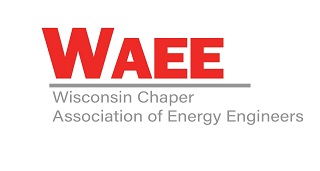
The democratization of energy can seem like a daunting future for utilities used to a monopoly on centralized power. Energy investments made by end customers, businesses and vendors in distributed energy assets are adding capacity and value to the grid. Also, the integration of software into energy opens the door for utilities to contribute to this momentum and become brokers of an energy marketplace.
Yet challenges with safety, compliance and reliability can prevent asset owners and grid operators from maximizing the financial and operational value of these potential transactions. With the industry’s emerging advanced energy management technologies, utilities can leverage integrated controls of distributed energy resources (DERs) to mitigate risk and increase visibility for a scalable, equitable grid.
Opportunities of Scale
Integration of microgrids and energy-generating assets by businesses and individuals is often bringing energy supply closer to the point of use—the “last mile” from transformers to end-user meters. In many areas, the hardware that enables bidirectional energy flow for a more distributed, agile grid exists, but the value of each generation asset can’t be fully realized without software to integrate energy at all scales into the larger electricity delivery system and prioritize the highest value, most reliable power.
Many utilities are already piloting applications to tap into multi-metered DERs in industrial settings and beyond, seeking to solve the challenges of aligning building heat and electrical loads with multiple onsite generation sources, including combined heat and power, solar, diesel generators and grid power. These advanced controls help stakeholders securely combine and connect multiple generation resources.
Some utilities are looking for technologies that can deploy renewable energy sources in a low-cost, stable and secure manner to be utilized behind and in front of the meter for grid services and use cases such as resiliency-as-a-service.
Grid assets are no longer exclusive to large infrastructure projects but are increasingly the domain of businesses and homeowners pursuing solar. Various residential solar and energy storage programs highlight this momentum, bringing intermittent resources online with export or non-export options for distributed generation.
Software solutions that can flexibly respond to all levels of scale are key for creating an integrated grid that fully uses all the expanded energy assets. The resulting infrastructure can reduce outage risk, increase grid stability and streamline safe remote power deployment, which ultimately benefits electricity consumers everywhere.
The Financial Factor of Energy Resources
Bidirectional energy management technologies offer revenue opportunities for both utilities and end users. Software and advanced controls provide equitable economic solutions, incorporating applications like time-of-use shifting, demand charge mitigation and added resiliency.
Utilities and customers can easily set parameters depending on their needs or the distributed generation services offered in their area. Defined specifications can automate repetitive tasks, increasing both efficiency and safety. This also enables the utility to report on actions as needed, which supports customer accountability.
Varying energy generation sources create complex operational challenges, but energy management technologies can use data to monitor, analyze and control behind-the-meter assets and fully capitalize on DERs. A smart software/hardware solution enables stakeholders on both sides of the meter to realize the highest value and most reliable electricity from all available energy sources. DERs become additional revenue sources for asset owners and controllable inputs for grid operators.
Historically, utility energy management policy programs, such as demand response, have been voluntary. Although numerous applications provide the ability to save or generate money with DERs, each project includes variables that must be modeled to determine the viability and prioritization of the applications. Software-enabled DERs create a more transparent, secure transfer of value to consumers for their grid contributions.
Integration of Energy Management Software
With more robust systems to incentivize and provide advanced modeling for these programs, increased adoption at all levels of the energy supply chain—from residential to utility-scale—will occur. The technologies that exist today allow all stakeholders to deliver and use the highest value, least expensive and most reliable electricity from all available energy sources. The next step is to fully integrate them into the electricity infrastructure.
The new wave of energy management software brings to light the full potential of distributed assets. These grid evolution tools encourage third-party energy generation while allowing utilities to maintain and extend their roles as vital service providers. With more local controls over distributed assets, software enables utilities to manage DERs on the grid and connect them to their larger energy systems for the most optimal distribution.
Thank you for checking out the EnTech Solutions blog. To stay up to date with technologies, developments and trends about clean energy, please subscribe.








